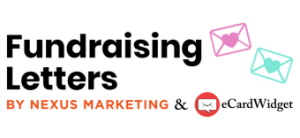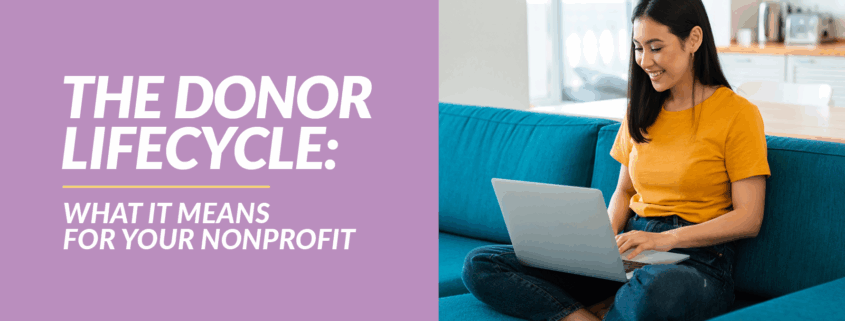The Donor Lifecycle: What It Means for Your Nonprofit
Imagine you’re a brand-new nonprofit donor. You’re intrigued, curious, and excited about the prospect of making a difference through your involvement. But after receiving one thank-you email and a generic event invitation, you don’t hear anything else from the organization. It may slip your mind completely, ending a relationship that had only just begun.
As a nonprofit, you can avoid this situation by prioritizing the donor lifecycle. Approaching every supporter as a potential long-term relationship helps you connect with them more easily, improve communications, and ultimately build a thriving donor community.
In this beginner’s guide, we’ll explore the donor lifecycle and how you can leverage it to build stronger, long-lasting relationships with supporters.
What is the donor lifecycle?
The donor lifecycle is a framework used to understand and facilitate a supporter’s journey from prospect to long-term donor for your nonprofit. It encompasses the full length of a donor’s relationship with your organization, no matter how long they stay involved.
Since every supporter has a unique relationship with your nonprofit, individuals’ donor lifecycles will vary. One person may be a one-time donor who lapses after a year before getting re-engaged down the line, while another moves swiftly from prospect to donor to loyal peer-to-peer fundraiser. Regardless, understanding and optimizing your communications based on the donor lifecycle will help you improve relationships.
Stages of the donor lifecycle
You can break down a donor’s lifecycle in several different ways, but we’ll start with the most basic version. Typically, you can follow a supporter’s relationship with your nonprofit through these four stages:
- Identification: Your team identifies the individual as a prospective donor. You might use research to find a major giving prospect or simply note that a member of your target audience visited your website or followed your organization on social media.
- Cultivation: In the cultivation stage, the supporter learns more about your nonprofit as you start building a relationship with them. This may involve targeted, personalized outreach or general invitations to learn more about your cause and get involved.
- Solicitation: This is when an individual makes a gift and becomes a donor. They might do this on their own or in response to a personalized fundraising appeal.
- Stewardship: After donating, your nonprofit must keep the donor engaged by following up regularly, showing appreciation, demonstrating impact, and providing new opportunities to get involved.
The length of these stages can vary considerably, and a donor can move through the cycle multiple times. For instance, one person might learn about your nonprofit and donate within a few hours, while a planned giving prospect spends months getting to know your organization in the cultivation stage before making a commitment.
Depending on a supporter’s giving potential, you can also expand the donor lifecycle to include other steps like research and upgrades. If you want to upgrade a mid-level donor to the next giving tier, for example, you could move them back through the cycle or create a dedicated upgrade campaign after stewardship.
Why the donor lifecycle matters
Once you understand the importance of the donor lifecycle, you can learn how to deepen relationships and build a strong base of support. We’ve compiled three core takeaways you can act on today.
1. It’s vital to track donor relationships.
To improve any donor relationship, you first need to understand where they are in their lifecycle—and you can’t do this without thoroughly tracking donor data.
Use a constituent relationship management (CRM) system or other fundraising platform to organize and analyze data easily. According to OneCause, using holistic fundraising software with analytics capabilities helps you strengthen donor relationships and improve retention rates. To leverage the full potential of your software, track information like:
- Giving history: Donors’ giving amounts, methods, frequencies, and habits
- Communication preferences: How each supporter wants to be contacted, such as via email, text, phone call, or direct mail
- Engagement history: The types of events, volunteer opportunities, and online interactions a donor has participated in and when
- Notes from conversations: Any information you learn about a donor’s giving motivations, cause interests, or concerns
- Personal details: Contact information, relevant relationships, personal interests, and other information that helps you better understand each supporter
- Prospect research findings: Wealth data, other philanthropic activity, and verified charitable interests
- Feedback: Any opinions they shared in surveys or conversations
This data will not only help you determine where donors are in the lifecycle but also how you can move them to the next stage. Use tracked information to inform your cultivation and stewardship efforts and personalize outreach.
2. You need an ongoing stewardship plan.
Relationships don’t spring up—and grow—out of nowhere. If the donor lifecycle teaches you anything, it should be that your nonprofit must work intentionally to engage, steward, and retain donors long-term.
To do so efficiently, you need a detailed plan. Develop a stewardship plan for ongoing engagement based on what appeals most to your unique donor base. Include several interactions and touchpoints you want to make with donors after they give, such as sending:
- Welcome letters and emails for first-time donors
- Prompt, personalized thank-you messages
- Invitations to get more involved by attending events, volunteering, or taking a tour
- Program, campaign, and impact updates
- Annual reports
- Requests for feedback
Ideally, your stewardship efforts should look different based on donors’ giving levels and individual preferences, but having a basic stewardship plan is an important first step. You can adjust this plan as needed, tailoring it to be more appropriate for certain donors. For example, you might manually individualize plans for each of your major donors while using your CRM to automate outreach for new supporters.
3. Give every relationship the attention it deserves.
The donor lifecycle proves that any supporter can become an impactful, long-term donor. This means you should engage every donor with the goal of building a genuine, lasting relationship with them.
The lifecycle isn’t just for major donors and prospects—even first-time event guests who bid on auction items or enter a raffle should be entered into your stewardship cadence. In fact, one study found that “auction donors are very likely to become long-term donors, with 83% reporting likelihood to become an annual donor.” Giving these supporters attention means:
- Getting to know them personally
- Sharing relevant information about your cause
- Inviting them to get more involved
- Genuinely appreciating their support
For instance, say you learn that a charity auction guest named Maria prefers text-to-give and has a special interest in your advocacy work. After sending her a thank-you message, you might text her a link to a blog post about your latest advocacy success. Then, invite her to sign a petition or take another action to make a greater impact.
To ensure your efforts remain sustainable, the level of individualized attention you give to donors should vary based on their gift size, giving potential, and engagement level, but every supporter should receive something.
Navigating the donor lifecycle
As you get to know your donors better and record that data in your fundraising solutions, you can adjust the type of information you track and how you plan to engage them over time. Keep the donor journey in mind when making decisions, and you’ll inspire deeper, longer-lasting relationships that help your organization thrive.




